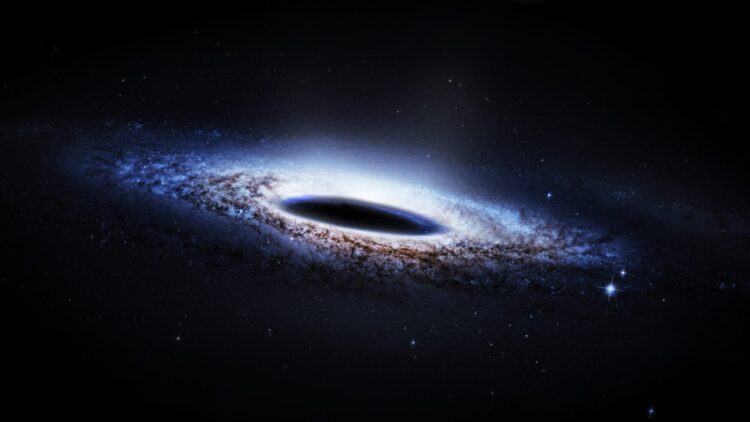Our knowledge of space is tremendously limited. With every technological advancement that allows us to explore a bit more, even within the confines of Earth, we learn something new that shocks us and shakes the foundations of the scientific community. The latest blow comes courtesy of NASA’s James Webb Space Telescope (JWST), thanks to which some now believe that our entire universe could actually exist inside a black hole.
This new theory started when JWST began capturing incredibly detailed images of far-off galaxies which revealed something quite odd to those looking at the images, most of these galaxies seem to be spinning in the same direction. The reason why this piqued the scientists attention is because we would expect an even split between clockwise and counterclockwise rotation across galaxies, but that is not what JWST found. Instead, researchers noted a clear preference for one direction, hinting at a possible large-scale rotation of the universe itself.
Why NASA’s new discovery is so pivotal to our understanding of the universe
Astrophysicist Lior Shamir explained that that if the universe is rotating, it could tell us a lot about how it began, which continues to be one of science’s great mysteries. This idea supports something called black hole cosmology, which proposes that everything in our known universe might be part of the inside of a massive black hole. This means that every galaxy, star, and particle would have come from a previous universe in which a black hole had formed and then had swallowed all these celestial bodies.
But the new theory takes black hole cosmology even further, suggesting that black holes could actually be gateways to new universes, so, instead of a universe that starts with a Big Bang and ends in darkness, we might be living in one link of an endless chain. Each black hole births a new universe, each with its own unique properties and timelines. That means our universe could be one of many, all connected in a vast multiverse.
This may seem to be out of a movie theory, but if it were true, it would completely change how we see black holes. Instead of just being terrifying space vacuums, they might be cosmic wombs with the implication that our universe might be a small bubble tucked inside a larger one, part of a structure far beyond anything we have imagined.
Plus, this theory could solve some of the more difficult problems in modern cosmology, like for example, there are galaxies out there that seem older than the universe itself, something that should not be possible under our current models. But if we were using the wrong framework, maybe the timeline just does not add up because we are measuring it wrong.
If black hole cosmology is correct, we would need to recalibrate the measurements we use and these anomalies would just give us more information about how the “old” universe worked. That said, this idea is still a very new theory, as the data from JWST is super compelling, but it is not definitive proof. More research is needed to confirm what these galaxy spin patterns really mean and scientists will have to look deeper and across different kinds of telescopic data to figure out what is really going on. They will need to test whether what we are seeing is just a fluke, a result of the Milky Way’s own motion, or something much more significant.
Still, the possibility that our universe exists inside a black hole opens the door to a totally new way of thinking about space, time, and even reality itself, and if proven, this theory would not just rewrite a few astronomy textbooks, but it would revolutionize our entire understanding of the cosmos.

